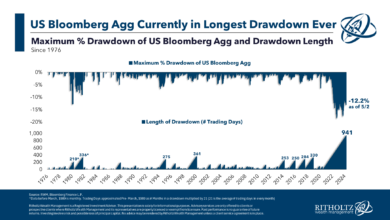GLOBAL MARKETS-Stocks, bond prices ease in see-saw session as investors mull ‘soft landing’

(Adds comment in paragraphs 4-5, oil, gold settlement prices, Updates prices at 3:05 p.m. ET)
By Herbert Lash and Naomi Rovnick
NEW YORK/LONDON Jan 5 (Reuters) – Bond prices and a gauge of global equity performance eased in choppy trading on Friday after a surprisingly strong U.S. employment report increased the odds that the Federal Reserve can engineer a “soft landing” for the U.S. economy.
U.S. employers hired more workers than expected last month while raising wages at a solid clip, leading markets to dial back bets the Fed would start cutting interest rates in March.
But a weak report from the Institute for Supply Management (ISM) that showed service sector employment plunged to 43.3 in December to the lowest level since July 2020 led the rate cut outlook to rise a bit. The index was at 50.7 in November. A reading above 50 indicates expansion, while one below that number shows contraction.
The ISM report was weaker than expected, but there is some volatility associated with it, said Russell Price, chief economist at Ameriprise Financial Services in Troy, Michigan.
“That’s another sign that the economy is moderating. But again, that’s good that it’s moderating down to a sustainable pace,” Price said. “It supports the case that the Fed is doing a good job of raising the odds of the soft landing.”
Futures traders on Friday saw a 68.3% chance of the Fed in March starting to lower its benchmark overnight interest rate from the current 5.25% to 5.50% range, according to the CME Group’s FedWatch Tool. That’s 1 percentage point higher than Wednesday.
Stocks on Wall Street rebounded after an initial decline, lifting MSCI’s broadest index of world stocks 0.17%. Prices for Treasuries, which move inversely to their yield, rebounded at first, too, but later declined.
The U.S. jobs report was “a sizable positive surprise that indicated the domestic economy continues to do well and expand,” said Tim Ghriskey, senior portfolio strategist at Ingalls & Snyder in New York.
“At least for now, it reversed the profit-taking that the market has experienced during this first week of the year.”
The Fed is hoping to drive inflation back down to its 2% target without triggering a recession or a sharp rise in unemployment, a scenario dubbed the “soft landing” by policymakers and financial markets.
The yield on the benchmark 10-year note rose 5.3 basis points to 4.044%. On the week, the 10-year’s yield rose 13.1 basis points, the largest weekly gain since mid-October.
The dollar index, a measure of the U.S. currency against six peers, slid 0.02% and the euro was unchanged at $1.0943.
In Europe, the pan-regional STOXX 600 index closed down 0.27% while on Wall Street, the Dow Jones Industrial Average fell 0.14%, the S&P 500 lost 0.08% and the Nasdaq Composite dropped 0.14%.
The blistering rally for equity markets at the end of 2023 was based on expectations that the Fed, alongside significant easing by the European Central Bank, would cut rates six times this year.
The monthly nonfarm payrolls report showed the U.S. economy added 216,000 new jobs in December. Economists polled by Reuters had expected a gain of 170,000.
The jobless rate held steady at 3.7%, down from most forecasters’ expectations for it to rise, prompting concerns that the Fed’s long battle to tame inflation may have further to run.
However, future labor demand is very soft and every other piece of the unemployment report is pointing in a downward direction, said Joseph LaVorgna, chief U.S. economist at SMBC Nikko Securities in New York.
The number of private wage and salary workers has declined, overall aggregate hours, a proxy for GDP, haven’t grown for three months in a row, and temporary employment has been down for 11 straight months, he said.
“You take the headline numbers, which are a little bit better than expected, and people are drawing the incorrect conclusion that the report is strong,” LaVorgna said.
Euro zone inflation data on Friday showed prices in the currency bloc rose 2.9% on a year-on-year basis in December, up from 2.4% in November and potentially creating less urgency for the ECB to start cutting borrowing costs from record highs.
Elswhere in financial markets, Japan’s Nikkei added 0.3% as exporters got a boost from a weaker yen.
A deadly New Year’s Day earthquake in Japan has also forced wagers for the ultra-dovish Bank of Japan to tighten monetary policy this month off the table.
Oil prices rose as U.S. Secretary of State Antony Blinken began a weeklong sweep through the Middle East in an attempt to contain regional tensions as the Israel-Hamas conflict rages.
U.S. crude futures rose $1.62 to settle at $73.81 a barrel and Brent futures settled up $1.17 at $78.76.
U.S. gold futures held steady after swinging up and down a percentage point on the mixed U.S. economic data. But non-interest-bearing bullion eyed its first weekly decline in four on an overall stronger dollar and higher Treasury yields.
CME gold futures settled mostly unchanged at $2,049.80 an ounce.
(Reporting by Herbert Lash; additional eporting by Naomi Rovnick, Kevin Buckland and Ankur Banerjee; Editing by Ros Russell, Mark Potter, Emelia Sithole-Matarise, Paul Simao and Jonathan Oatis)





